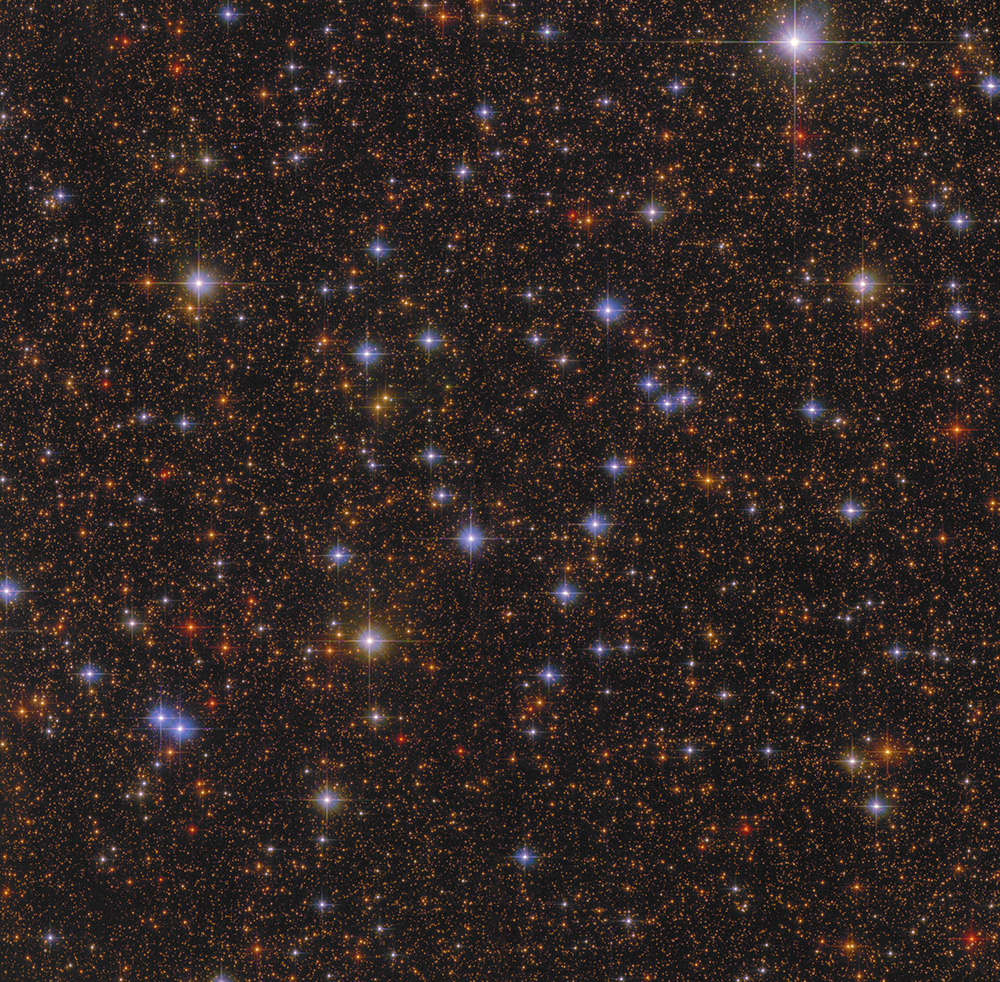
Stars in Sagittarius (2015)
This is a dust-obscured region of Sagittarius near Terzan 5, created using wideband near-infrared (814nm), red (606nm), and blue (435nm) filters. This high density of stars is striking but typical for imagery near the Milky Way’s core. The near-infrared filter collects light which is able to penetrate the dusty lane which crosses between us and the galactic nucleus, so the colors here have less to do with the stars themselves and is probably more indicative of their positions. Bluer stars are likely closer to the foreground while redder ones are more deeply embedded. This is just a general idea, though. Some blue stars may indeed be hot and bright blue stars while some red ones may be actual red stars. It’s hard for me to say. I wonder how one would go about removing the influence of the dust in order to take some accurate measurements? I’m not sure there’s any easy way to go about it.
There is nothing in particular in this image. I just thought it was an especially beautiful parallel field. The primary target of observation was the nearby globular cluster Terzan 5, which has an interesting history, possibly being the leftover nucleus of a dwarf galaxy rather than a true globular cluster. I can’t say there are any of Terzan 5’s stars in this parallel field. This field is about 5 arcminutes away from Terzan 5 but globular clusters can be quite extended.
Many large charge bleeds are removed by overlaying cloned data on top of them. The chip gap is also present but filled with cloned data.
This image is possible thanks to the following proposal:
Hunting for Optical Companions to Binary MSPs in Globular Clusters
Red: HST_11615_01_ACS_WFC_F814W_sci
Green: HST_11615_01_ACS_WFC_F606W_sci
Blue: HST_11615_01_ACS_WFC_F435W_sci
North is NOT up. It is 1.8° clockwise from up.
Copyright information:
Hubble data is public domain, but I put a lot of work into combining it into beautiful color images. The minimal credit line should read: NASA / ESA / J. Schmidt

This work is licensed under a Creative Commons Attribution 3.0 Unported License.


